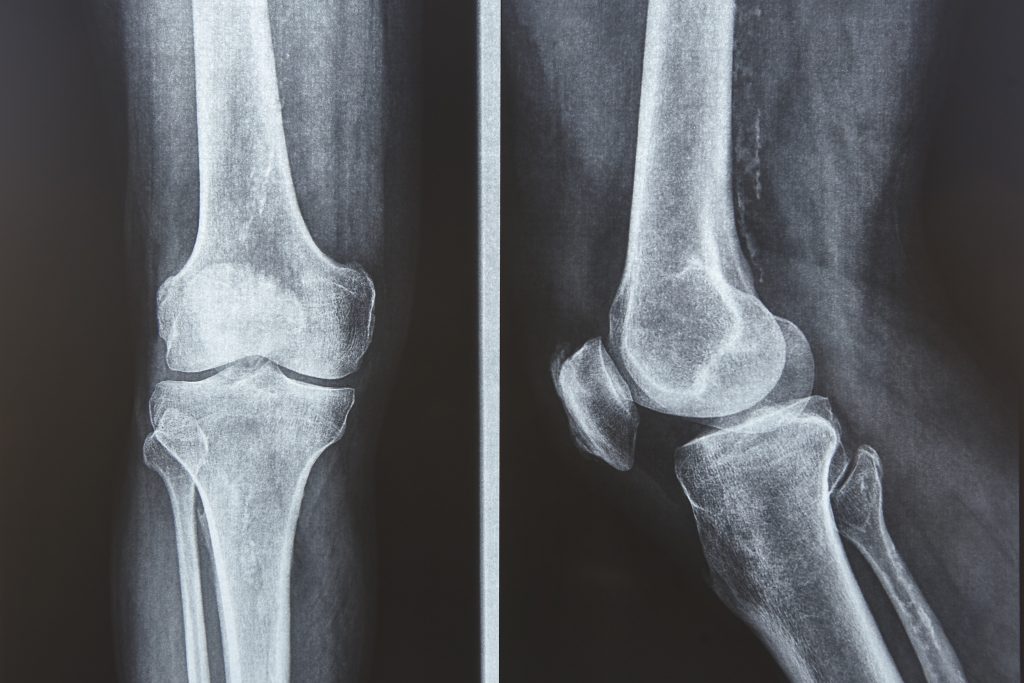Knee Osteotomy
When the knee joint is damaged, a knee osteotomy is performed. There are two categories of osteotomy: opening wedge and closing wedge. Following the surgery, individuals generally do not have to restrict their physical activity once they have fully recovered from the procedure.

Why the Procedure Is Performed
Knee osteotomy is performed to alleviate symptoms of knee arthritis or to address instability. This procedure is considered when alternative treatments no longer provide relief.
Arthritis primarily targets the inner region of the knee, with the outer part usually remaining unaffected unless there has been a prior knee injury.
Osteotomy surgery is successful by relocating the pressure from the affected area of your knee to another part. However, to ensure the surgery’s effectiveness, the destination side of the knee should have minimal or no arthritis.
Who is suitable for an osteotomy?
Osteotomy surgery is typically limited to younger, more physically active individuals who have osteoarthritis impacting just one section of their knee joint. This procedure has been proven to be beneficial in prolonging the durability of the natural knee joint and postponing the need for knee replacement surgery.
Preparation for knee osteotomy
Before undergoing a knee osteotomy, your doctor may suggest that you use a leg brace that replicates the post-surgery alignment of your knee. If the brace provides relief, your doctor may consider a knee osteotomy as an option for you. Additionally, your doctor may advise you to engage in strengthening exercises to enhance the strength of your knee and improve its range of motion prior to the operation. Other suggestions prior to the surgery may include:

- Prevent sunburn, cuts, rashes from poison ivy, and other issues that could impact the vicinity surrounding the surgical location.
- Cease the usage of medications like NSAIDs that can impede blood clotting and steroids that inhibit the immune system.
- Stop smoking two weeks before surgery.
- Reduce or eliminate alcohol consumption.
- Before your surgery, make sure to inform your doctor about any medical conditions, specifically if you are experiencing symptoms like high body temperature.
What outcomes can I anticipate from undergoing a knee osteotomy?
You will undergo knee osteotomy while under the effects of anesthesia. Your doctor will suggest the most suitable type of anesthesia for you, which may include:
- General anesthesia: Your doctor administers medication that induces a state of sleep during the surgical procedure.
- Spinal anesthesia involves the administration of an injection in your back to induce numbness in the lower half of your body.
The doctor has various choices for stabilizing the osteotomy during the recovery process. These include options like metal screws and a plate, or alternatively, using a biocomposite material to keep the realigned bone secure as it heals. The duration of knee osteotomy surgery typically ranges from one to two hours.
Your doctor will carefully watch over you after a knee osteotomy as you recover from anesthesia. Typically, those who undergo this procedure will be discharged from the hospital one to two days after the operation, with some even going home on the same day. During the healing process, it is probable that you will have to rely on crutches or a walker for a few weeks in order to prevent exerting excessive pressure on the knee as it recuperates.
Duration of knee osteotomy recovery

The process of recuperation following a knee osteotomy is quite long. You will need to use crutches for a number of weeks and partake in several months of physical therapy. Additionally, regular visits to the doctor are necessary to monitor your healing progress. Although most patients are able to walk without assistance within eight to 12 weeks after the surgery, it will take anywhere from six months to a year to fully recover. The duration of your recovery will be influenced by various factors, such as:
- Your overall health.
- Please provide any surgical complications you have had.
- Type of hardware used and where it was used to secure the osteotomy.
- The placement and dimensions of the bone wedge in the knee.
Knee Osteotomy vs. Knee Replacement
The popularity of knee osteotomy has increased due to advancements in surgery and the growing use of surgical treatments for knee arthritis. Patients opt for knee osteotomy mainly because it maintains the integrity of the tissues around the knee and can potentially delay or eliminate the necessity for a knee replacement surgery.
A knee osteotomy preserves the knee joint, ligaments, and the natural sensation of the knee during various movements. This is beneficial for individuals who wish to maintain high levels of knee function for activities like running, squatting, kneeling, and climbing.
An osteotomy in the knee could potentially prevent or delay the necessity of undergoing knee replacement surgery. The option of postponing this surgery holds significance for certain patients, as a typical prosthetic knee can last 15 years or longer before requiring a revision knee replacement procedure. Naturally, patients prefer to make decisions that will help them avoid the need for additional knee surgery in the future.
Treatment in Türkiye:
The medical staff of surgical teams, doctors, and consultants at REHABTÜRK can provide the best treatment options and free consultations, striving to stay up-to-date on the latest medical technologies and methods.
